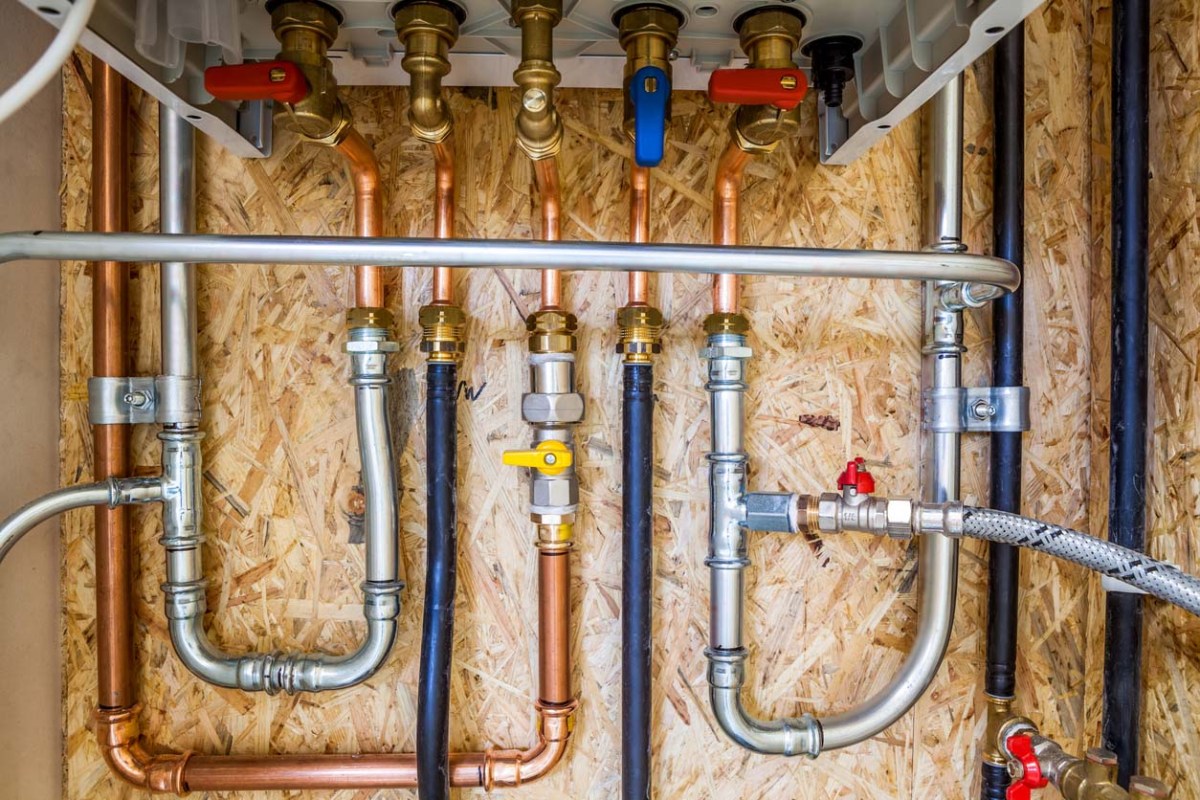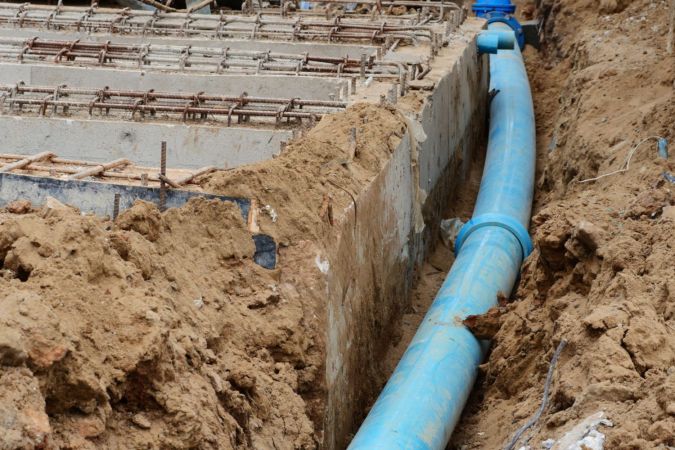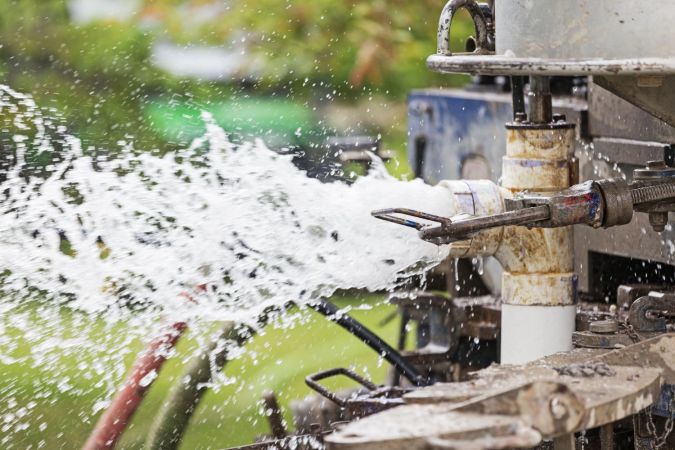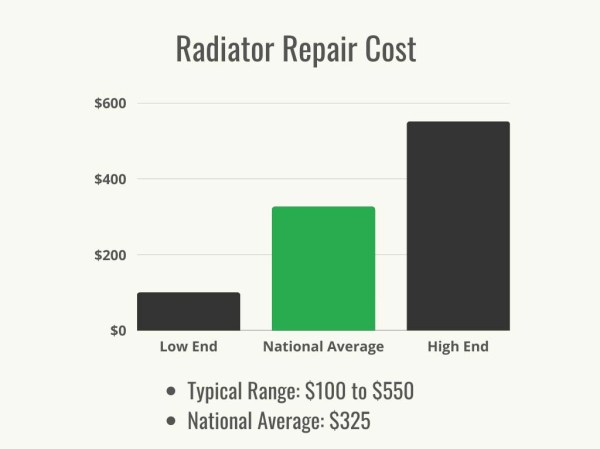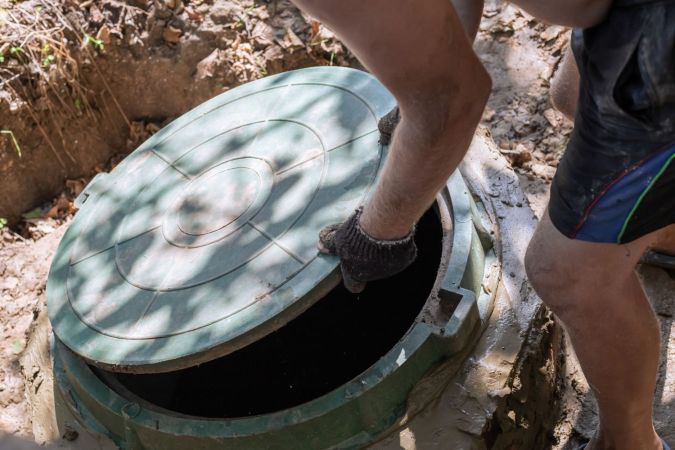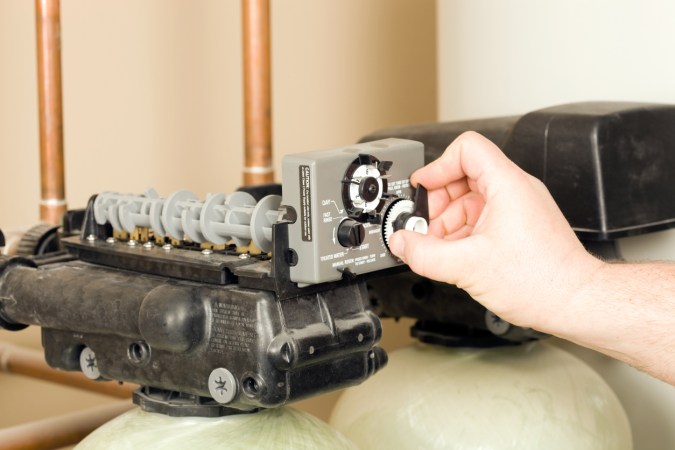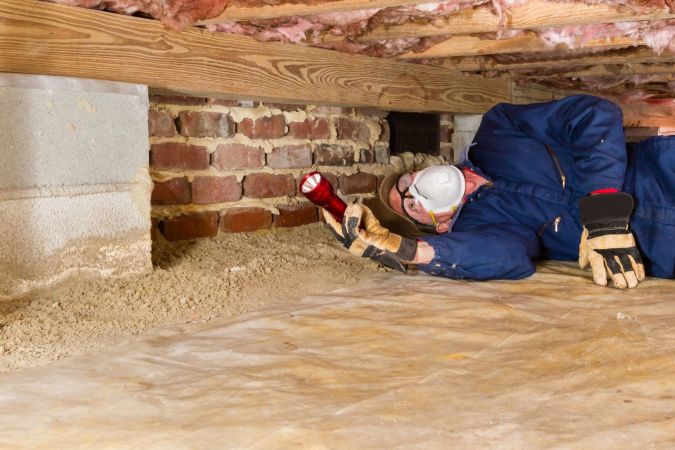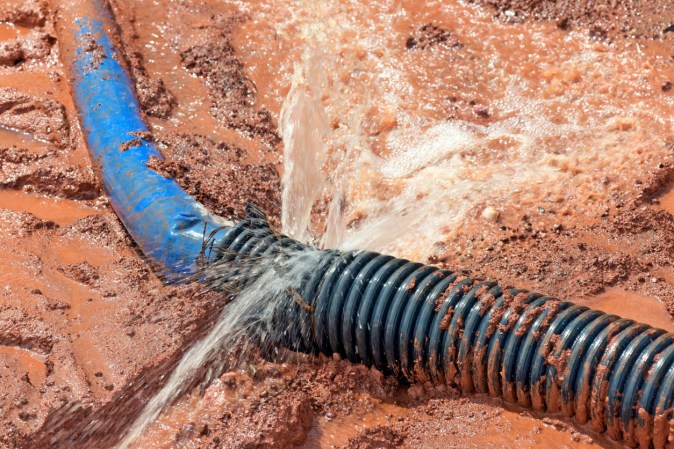We may earn revenue from the products available on this page and participate in affiliate programs. Learn More ›
Highlights
- The typical cost to repipe a house falls between $1,500 and $15,000, and the national average cost is $7,500.
- The main factors that influence the cost to repipe a house include the size of the house, the number of plumbing fixtures, the pipe material and diameter, the accessibility of the pipes, and the cost of labor.
- Common signs that a house needs to be repiped include discolored water, clogged or leaking pipes, poor water pressure, odd-tasting water, and a moldy smell in the house.
- Repiping a house is a major job best left to an experienced professional who can ensure that the project is completed safely and with the correct types of materials.
Pipes to a home are like the arteries and veins of the human body. Just as arteries and veins transport blood throughout the body, pipes move water and other fluids throughout a house.
And just like clogged arteries can lead to health problems in a human, damaged or corroded pipes in a home can lead to serious plumbing issues. Routine maintenance and good plumbing practices can extend the life of a home’s plumbing system. But eventually, all pipes need to be replaced.
Many homeowners may be hesitant to repipe their homes due to concerns about cost. While repiping a house can be a significant investment, it’s important to keep in mind that the long-term benefits of a properly functioning plumbing system can outweigh the initial expense.
According to Angi and HomeAdvisor, the average cost to repipe house plumbing systems is $7,500, though the project can cost anywhere from $1,500 to $15,000. Factors that influence the average cost to repipe a house include the house size, the number of plumbing fixtures, and the cost of labor.
This guide is designed to help homeowners understand how to calculate repiping costs, recognize when it’s necessary to repipe a home, and discover ways to save money on the cost to replumb a house.
Factors in Calculating the Cost to Repipe a House
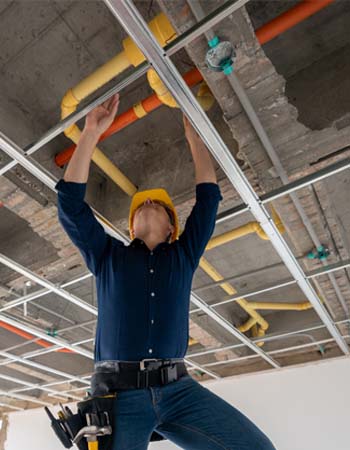
Calculating the cost to repipe a house can be complex. Several factors can influence the cost, though the national average cost for repiping is around $7,500. Understanding variations in the following factors can help homeowners create a budget without a plumbing cost estimator tool.
House Size
House size plays a large role in determining how much repiping a home will cost. Larger homes generally require more pipes and materials, which can significantly increase the overall cost.
A home’s layout also plays a role in determining repiping costs. For example, a two-story home will typically require more materials to reach plumbing fixtures on the upper floor, which can add to the cost. Homes with multiple bathrooms, hot tubs, or second kitchens may also require more piping and materials, increasing the cost further.
In any of these scenarios, homeowners budgeting for the project will benefit from knowing that the cost of plumbing a 3-bedroom house measuring 1,500 square feet falls anywhere between $2,280 and $5,120. Homeowners can expect a lower range for a house smaller than 1,500 square feet and a higher range for homes larger than 1,500 square feet.
It’s also worth noting that the cost to replace plumbing in an old house may be more than for a larger one, even if the house is small.
Number of Plumbing Fixtures
While replacing fixtures when replumbing a house is not always necessary, many homeowners choose to do so for several reasons:
- Aesthetics. New pipes can improve the functionality and aesthetics of a home’s plumbing system. Updated fixtures can match the new pipes and give the home a modern look.
- Efficiency. New fixtures using less water and energy can be more efficient. This can save homeowners money on their utility bills over time.
- Cost savings. If a homeowner decides to replace fixtures during the repiping process, they can save money by doing both at the same time. This eliminates the need for additional labor costs and minimizes the inconvenience of having to schedule another visit by a plumber.
Generally speaking, the more plumbing fixtures a home has, the higher the cost of repiping will be. It’s important for a homeowner to consider the number of plumbing fixtures in a home when calculating the cost of repiping.
| Fixture | Cost Range |
| Dishwasher | $400 to $600 |
| Double sink and faucet | $400 to $600 |
| Washing machine | $450 to $1,700 |
| Water heater | $600 to $1,800 |
Pipe Material
The type of pipe material used in repiping a house can significantly impact the project’s overall cost.
Copper pipes cost between $2 and $8 per linear foot and can last 50 to 100 years. They are resistant to bacteria and UV exposure and can survive natural disasters. However, they can corrode over time and eventually burst.
PEX (cross-linked polyethylene) is flexible, resistant to chlorine and scale buildup, and can be used with other materials like CPVC (chlorinated polyvinyl chloride). However, they can still burst over time. While there are different types of PEX tubing, all cost between $0.40 and $2 per linear foot, and they can last 80 to 100 years.
CPVC pipes cost between $0.50 and $1 per linear foot and can last 50 to 70 years. They are made from the most commonly used material in residential construction, but they are not as flexible as PEX or as durable as copper.
Pipe Diameter
The diameter of pipes used for repiping a house can also influence the cost of the project. Typically, pipes designed to drain waste have a larger diameter than those designed to carry water. As a result, larger-diameter pipes require more materials to install, making them more expensive than smaller pipes.
Homeowners will want to consider the size of the pipes when determining the total cost of a repiping project. While larger-diameter pipes are more expensive, they can make a home’s plumbing system more efficient. It’s important for homeowners to consult with a professional plumber to determine the right size of pipes for a home’s specific needs in order to avoid budget-busting surprises.
Pipe Accessibility
The accessibility of pipes in a home also affects the cost of repiping a house. In some cases, the plumbing contractor may need to cut through walls or remove flooring to reach the pipes. These extra steps can extend the timeline of a project. When it takes longer to remove old pipes and install new ones, costs tend to increase.
On the other hand, pipes with easier access can typically be replaced more quickly and with less labor, reducing the overall cost. Homeowners will want to be prepared to pay more for repiping projects in areas that are difficult to access.
Labor
Plumbers typically charge hourly rates ranging from $45 to $200, depending on their level of expertise. However, when it comes to repiping a house, plumbers usually provide a per-project bid rather than charging by the hour. Plumbers generally don’t expect tips, but a homeowner might consider tipping a plumber for a particularly difficult job.
For further insight, homeowners can expect to pay anywhere from $675 to $3,000 in labor charges for a job that takes around 15 hours. This includes installing or replacing pipes and handling the demolition, which may require cutting through walls and ceilings to access hidden piping.
Additionally, if the plumber has to cut through the ceiling or drywall, homeowners may need to hire a separate contractor to make repairs. Repairing a ceiling costs around $45 to $90 per square foot, while repairing drywall costs around $50 to $75 per square foot.
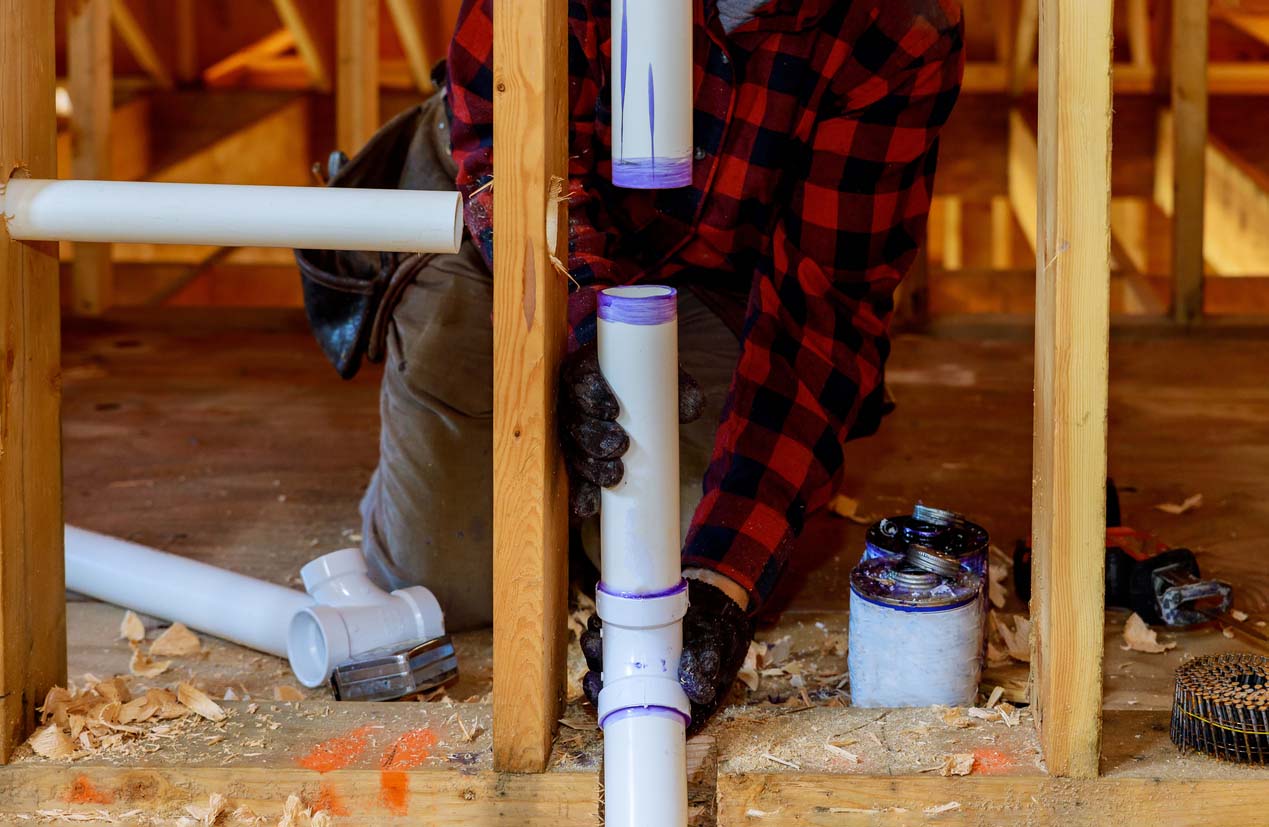
Additional Costs and Considerations
Aside from the obvious costs of repiping a house, there are various other considerations for homeowners to consider when planning this type of project, including inspection fees, permits, and potential costs based on the type of soil surrounding the home.
Inspection Costs
Before committing to a whole-house repiping, homeowners may want to consider reaching out to a local plumber for an inspection to determine if their home has any trouble areas and requires pipe replacement.
An inspection involves a thorough review of all the plumbing in the home, which could span hundreds of feet, to evaluate its condition and identify any issues. A plumbing inspection can determine whether a homeowner needs to replace some or all of the plumbing or if no action is necessary.
An inspection can cost between $250 and $1,200 but can ultimately save thousands of dollars in unnecessary work if only minor repairs are required.
Permits
Permits for plumbing projects can range from $50 to $500, depending on the location and complexity of the project. A permit ensures that the project meets local building codes and safety regulations.
Plumbing projects typically require a permit because they involve working with the water and sewer systems. If a homeowner decides to repipe their home without securing a permit, they could find themselves facing fines or penalties.
Homeowners can perform minor plumbing repairs in some areas, like replacing a pipe beneath their bathroom sink, without a permit. However, they will always want to check with their local building department to determine whether a permit is required for their repiping or plumbing project.
Existing Pipe Removal
Removing existing pipes is a critical step in repiping a house and adds to the overall project cost. Some pipes can be difficult to remove, especially those behind walls or under floors. By comparison, the cost of plumbing for new houses is often less expensive, as pipes are installed before walls and floors are built.
Additionally, removing old pipes can create debris and potentially damage ceilings, walls, or floors around the project area, leading to additional cleanup costs.
Most plumbing contractors include pipe removal costs in their quotes rather than charging them separately. Homeowners will want to confirm this to avoid surprises and to ensure the project is completed within budget.
Water Main Replacement
A water main is a pipe that delivers water from the municipal supply to a home, typically underground in the front yard. If the water main is in good condition and functioning properly, it may not need to be replaced during a repiping project. However, if a water main line is damaged, it’s in a homeowner’s best interest to replace it while repiping their home.
Water main replacement is a more complex and expensive process than indoor pipe replacement. Water main replacement costs typically range from $600 to $2,500, depending on the length of the line. The amount of excavation required to reach a water main can also influence replacement costs.
Soil Type
Soil conditions play a crucial role in the cost of repiping a home. The type of soil surrounding a house can impact its plumbing system’s longevity and durability, leading to increased costs.
For example, clay soil tends to shift and move over time, which can cause the surrounding plumbing to shift as well, resulting in costly plumbing repairs. Sandy soil, on the other hand, is known for its excellent drainage but can also cause pipes to corrode more quickly due to the presence of minerals and salts.
Homeowners can’t change the soil type around their homes, but they will want to be aware of its potential advantages and setbacks for their plumbing system when they are budgeting for a repiping project.
Mobile Home Repiping
The average cost to repipe house piping in a mobile home is between $1,500 and $4,000. Mobile homes often have a simpler plumbing system and less square footage than a standard house, making the repiping process less time-consuming and less expensive. However, the cost of the materials used for the repiping project can still add up.
Additionally, mobile homes may have unique plumbing configurations and may require specialized knowledge and tools, which could affect the overall cost. Regular inspections and timely repiping of a mobile home’s plumbing system are crucial to avoid water damage, leaks, and expensive repairs. Neglecting to repipe a mobile home when necessary can lead to severe plumbing issues in the future.
Cost to Repipe a House by Type of Pipe
Different types of plumbing pipe offer varying benefits and come at different price points. It’s important for a homeowner to understand the differences between each type to make an informed decision when repiping their home. The following are the three most common types for homeowners to consider.
| Piping Material | Cost per Linear Foot |
| Copper | $2 to $8 |
| CPVC | $0.50 to $1 |
| PEX | $0.40 to $2 |
Copper
Copper pipes are popular for repiping houses due to their durability and natural resistance to bacteria. Copper pipes don’t release harmful chemicals into a home’s drinking water and can improve water quality.
While more expensive than plastic pipes, copper pipes can last 50 to 100 years and are strong enough to withstand natural disasters, including earthquakes, hurricanes, and wildfires. They’re also not susceptible to UV exposure, unlike some other materials.
However, copper pipes can corrode over time, potentially leading to leaks or bursts. The cost of copper piping is usually between $2 and $8 per linear foot, making it a more expensive option than some other materials.
Chlorinated Polyvinyl Chloride (CPVC)
CPVC, or chlorinated polyvinyl chloride, has been a popular piping material used in residential construction since the 1960s. Replacing galvanized pipes costs between $0.50 and $1 per linear foot for CPVC, making it one of the most affordable options.
CPVC pipes can last between 50 and 70 years, which is a relatively long lifespan for plastic material. However, CPVC is not as flexible as other materials and must be joined or connected to create angles. This can add additional time and labor to a project.
Additionally, CPVC has a lower temperature limit compared to other piping materials and may not be suitable for high-temperature applications.
Cross-Linked Polyethylene (PEX)
Cross-linked polyethylene, or PEX, is popular for its physical flexibility, making it easier to install and maneuver through tight spaces. When comparing PEX vs. copper, homeowners will find that PEX doesn’t corrode and is more resistant to chlorine and scale buildup, ensuring long-lasting performance. When it comes to polybutylene pipe replacement costs, PEX pipe is often the chosen material.
One of the many advantages of using PEX tubing is its compatibility with other material types, such as CPVC, allowing for more flexible plumbing options. While it may eventually burst, PEX can still last between 80 and 100 years, making it a cost-effective and durable option for homeowners.
Additionally, PEX is less expensive than copper, with a cost of around $0.40 to $2 per linear foot. However, it is susceptible to damage from curious rodents chewing PEX pipe.
Do I Need to Repipe My House?
Determining when to repipe a house can depend on a number of factors, including the condition of the pipes. In some cases, pipes may be too far gone to be repaired and require replacement. The following are some signs that a pipe may need to be replaced.
Water Discoloration
A change in a home’s tap water can signal the need for repiping. This can include a yellow, brown, or even a greenish tint in running water. Homeowners may notice their water looks dirty or cloudy. It may or may not have a strange odor. Homeowners are strongly advised not to drink discolored water.
Rust or sediment buildup is often the cause of water discoloration. Over time, minerals and other particles can build up in a home’s pipes, leading to clogs and corrosion. If left untreated, this can severely damage a home’s plumbing system. If the home’s tap water is discolored, repiping may be necessary to ensure residents have a clean and safe water supply.
Clogged or Leaking Pipes
There are several signs that can signal clogged or leaking pipes, including low water pressure, slow drainage, foul odors, and visible leaks.
Clogged or leaking pipes can be caused by a variety of factors, including mineral buildup, tree root infiltration, and a damaged plumbing system. Homeowners who suspect a clog or leak will want to immediately contact a licensed plumber, who can quickly assess the situation and recommend the appropriate repairs or, in some cases, repiping.
Repiping damaged or corroded pipes can improve a home’s water flow and reduce the risk of future leaks or clogs, thereby increasing the lifespan of a plumbing system and potentially saving a homeowner money on future repairs.
Poor Water Pressure
Poor water pressure can be caused by several factors, including rust and sediment buildup, corrosion, leaks, and damage to the plumbing system. Poor water pressure can also be linked to issues with the municipal water supply. Signs of poor water pressure include the following:
- Slow flow. Slow or weak water flow from faucets or shower heads can signal poor water pressure, and homeowners may need to repair or replace pipes to fix the issue.
- Inconsistent water pressure. If a homeowner notices that the water pressure is inconsistent throughout the house, this could be a sign that the pipes need to be replaced.
- Difficulty rinsing. Soap or shampoo that is hard to rinse from skin or hair could signal an issue with the home’s water pipes.
- Inadequate water pressure. This can make it difficult to complete household chores like watering the lawn or washing the car.
Repiping isn’t the only solution for poor water pressure. In some cases, simple repairs or adjustments can resolve the issue. But if the underlying cause is extensive pipe damage or corrosion, repiping may be the only way to restore a home’s water pressure.
Unusual Water Taste
If a homeowner notices their water tastes metallic, bitter, or otherwise unpleasant, it could be an indication of issues with the home’s plumbing system. In some cases, there may be a bad smell that goes along with the water’s unusual taste. It may still be safe to drink, but homeowners will want to quickly investigate the source of the taste to ensure their water is clean and safe.
Potential solutions include flushing water lines for sediment or debris, installing a water filtration system, adding a water softener to remove taste-altering minerals, and reporting taste or odor concerns to the local water company. Repiping may be necessary to restore a home’s water taste, especially if pipes are severely damaged or corroded.
Mold in Pipes
Mold in a home’s pipes can pose significant health risks to its residents, particularly those with allergies, respiratory issues, or weakened immune systems. Signs of mold in a home’s plumbing system include a musty odor throughout the home, visible mold growth on surfaces near pipes, and sudden respiratory issues in those living in the home.
Mold growth is caused by a combination of moisture, warmth, and organic matter, making pipes an ideal growing environment. Depending on the severity of the mold growth, repiping may not be necessary. Cleaning the affected area and improving ventilation may be enough to eliminate mold.
But in some cases, repiping may be necessary to eliminate the mold and prevent future growth. If a homeowner suspects mold growth in or around their plumbing system, it’s a good idea for them to contact a professional who can thoroughly assess the situation.
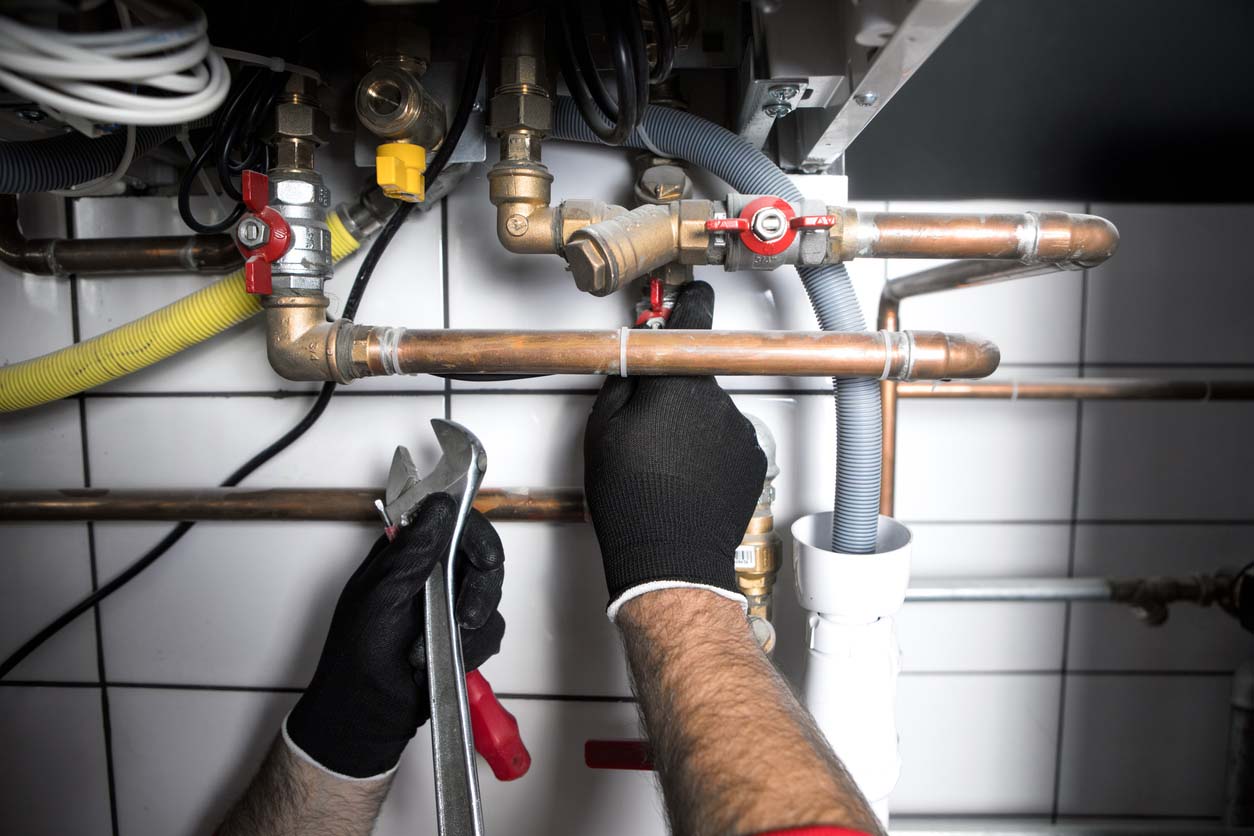
Repiping a House: DIY vs. Hiring a Professional
Repiping a house can be daunting, and homeowners are often faced with deciding whether to DIY or hire a professional. While a DIY approach may seem more affordable, it’s important to consider the risks involved.
Repiping a house requires a high level of expertise and experience in plumbing and water connections. An improperly installed pipe can lead to costly leaks and water damage. This is why hiring a qualified plumber for such a project is strongly advised for homeowners. The following are some factors to consider when weighing the decision to DIY or hire a professional for repiping.
| DIY Repiping | Professional Repiping |
| Potential cost savings | Higher overall cost |
| High level of expertise and specialized tools required | Expertise and experience in plumbing and repiping |
| Risk of safety hazards such as electric shock and gas leaks | Quality assurance with proper installation and potential warranty |
| Risk of improper installation, leading to leaks and water damage | Proper disposal of old piping and materials |
It is important for homeowners to remember that repiping a house is a complex project requiring a high level of expertise. Hiring a licensed plumber can ensure that the job is done properly and with the right materials, thereby avoiding costly mistakes and damages. Additionally, a licensed plumber can provide a warranty on their work, giving homeowners peace of mind.
While DIY may seem like a cost-effective option, it’s important for homeowners to fully weigh the pros and cons to determine if the potential cost savings are worth it. Repiping a house is not a project that should be taken lightly; hiring a licensed plumber is often the safest and most effective route.
How to Save Money on the Cost to Repipe a House
Repiping a home can be a large investment, and it’s only natural for homeowners to want to reduce project costs. However, it’s important to avoid cutting corners that could lead to bigger problems down the line. The following are some tips for saving money on repiping without sacrificing quality.
- Clean drains regularly. Clogs and buildup in pipes can lead to corrosion and the need for repiping sooner than necessary. Regularly cleaning drains and pipes can help prevent these issues.
- Repair leaks and cracks quickly. Even small leaks or cracks can lead to bigger problems. Addressing these issues quickly can prevent the need for more extensive and expensive repairs or repiping.
- Compare quotes from multiple plumbers. Reach out to several licensed plumbers to get quotes for the repiping project. Comparing these quotes can help homeowners find the best value for their money.
- Keep up with routine maintenance. Regular maintenance of plumbing fixtures and appliances can help prevent the need for repiping in the first place. Keeping up with routine maintenance can save homeowners money in the long run.
- Consider financing options. Repiping can be a significant expense, but some plumbers may offer financing options that can make the project more affordable.
- Look into a home warranty. This is a type of service contract designed to help homeowners pay to repair or replace home systems or appliances, and home warranties typically cover plumbing systems. Consider the best home warranties for plumbing such as American Home Shield or Choice Home Warranty.
Questions to Ask About Repiping a House
When it comes to repiping a home, it’s crucial for homeowners to ask the appropriate questions before hiring a plumber. Assessing expertise and knowledge is the best way to ensure the project is completed properly and within budget. The following are some questions a homeowner may consider asking professional prospects to find the best plumbing services for the job.
- Are you licensed and insured?
- Can you provide a detailed estimate for the project?
- What type of piping material do you recommend, and why?
- How long will the project take?
- How soon can you add the project to your schedule?
- Are permits required, and if so, will you do the work to secure them?
- Will I need to vacate the house during the project?
- Will you handle the removal and disposal of old piping?
- Will you complete the project, or do you work with subcontractors?
- Is there any routine maintenance that I should perform on the new pipes?
- How long can I expect the new pipes to last?
- Do you offer any warranty or guarantee on the work performed?
FAQs
Repiping a home can be a necessary step in several scenarios, and the cost to repipe house plumbing systems can vary based on home size, pipe type, and severity of the issue. While repiping a home can be costly, it provides homeowners with peace of mind and ensures access to clean water for years to come. For homeowners with additional concerns about repiping a home, the following frequently asked questions may be helpful.
Q. Is it worth repiping a whole house?
Repiping a house can be a significant investment, but it’s often worth it if the pipes are deteriorating, leading to frequent repairs. Leaks and water damage can also be costly issues caused by old pipes. Investing in new pipes can provide a homeowner with up to 100 years of reliable plumbing and increase the value of their home. In the long run, the peace of mind and savings on repairs make it a worthwhile investment.
Q. How often should I repipe my house?
The lifespan of pipes varies based on the material used. Copper pipes last 50 to 100 years, CPVC pipes last 50 to 70 years, and PEX pipes last 80 to 100 years. Lead pipes will need to be replaced immediately due to their toxic risks. Homeowners will want to do their best to track the age and condition of their home’s pipes to determine when it’s time to repipe.
Q. Does repiping include drains?
No, repiping only involves the replacement of a home’s pipes that deliver water throughout the home. Fixtures like drains, sewer pipes, toilets, showerheads, and faucets are not replaced during a repiping project. These fixtures don’t typically need to be replaced unless they’re damaged or outdated. Replacing these features can be an add-on service if homeowners are working with a plumber, though it will add an extra cost to the project. For example, sewer line replacement costs just under $3,000 on average.
Q. What is the best material to repipe the house?
When homeowners are considering the best material to repipe a house, several factors come into play. While CPVC is the most expensive option, copper offers added benefits such as durability and resistance to corrosion. PEX offers a more affordable middle ground while still providing benefits such as flexibility and ease of installation. Ultimately, the choice of material will depend on the specific needs and budget of the homeowner.
Q. How long does it take to repipe the entire house?
Repiping an entire house can take anywhere from a few days to a few weeks, depending on the house’s size and the project’s extent. Projects with more pipes or difficult-to-access pipes are likely to take longer. The type of material being used can also influence the timeline of the project.
Q. How long do PVC pipes last in the house?
PVC (polyvinyl chloride) pipes typically last between 25 and 40 years, but new versions can last up to 70 years or more. Although PVC pipes aren’t as durable as metal pipes, they don’t corrode or rust, eliminating the risk of metal leaching into a home’s drinking water. It’s important to note that the lifespan of PVC pipes can be affected by water quality, installation, and maintenance.
Sources: Angi, HomeAdvisor, HomeGuide
